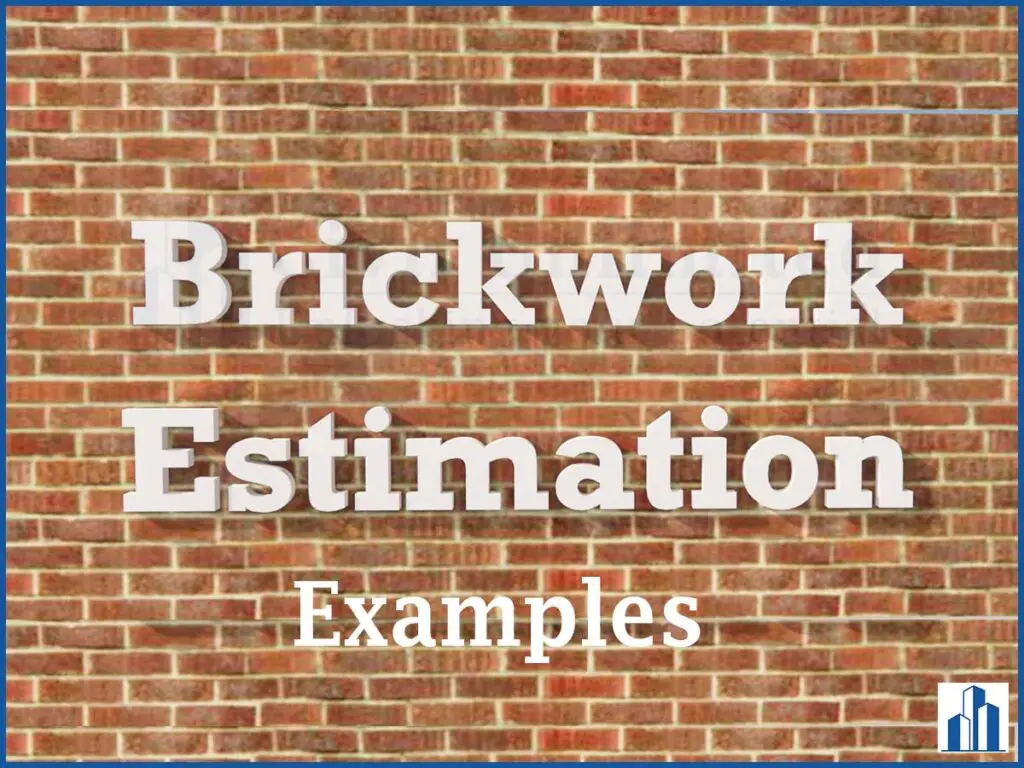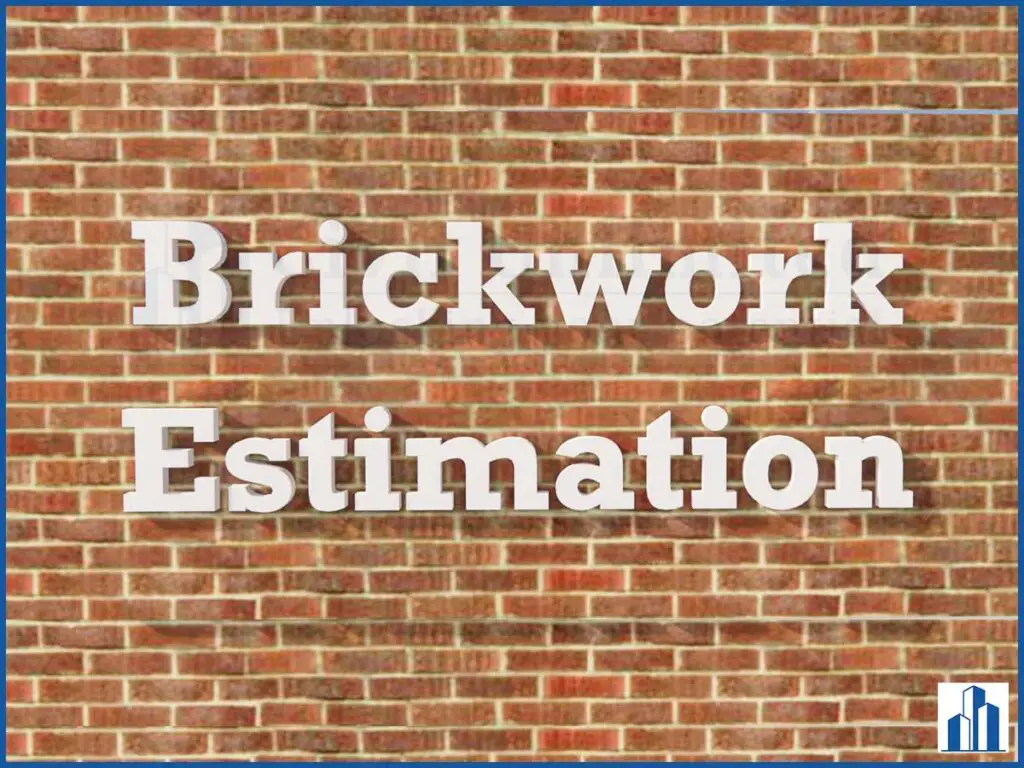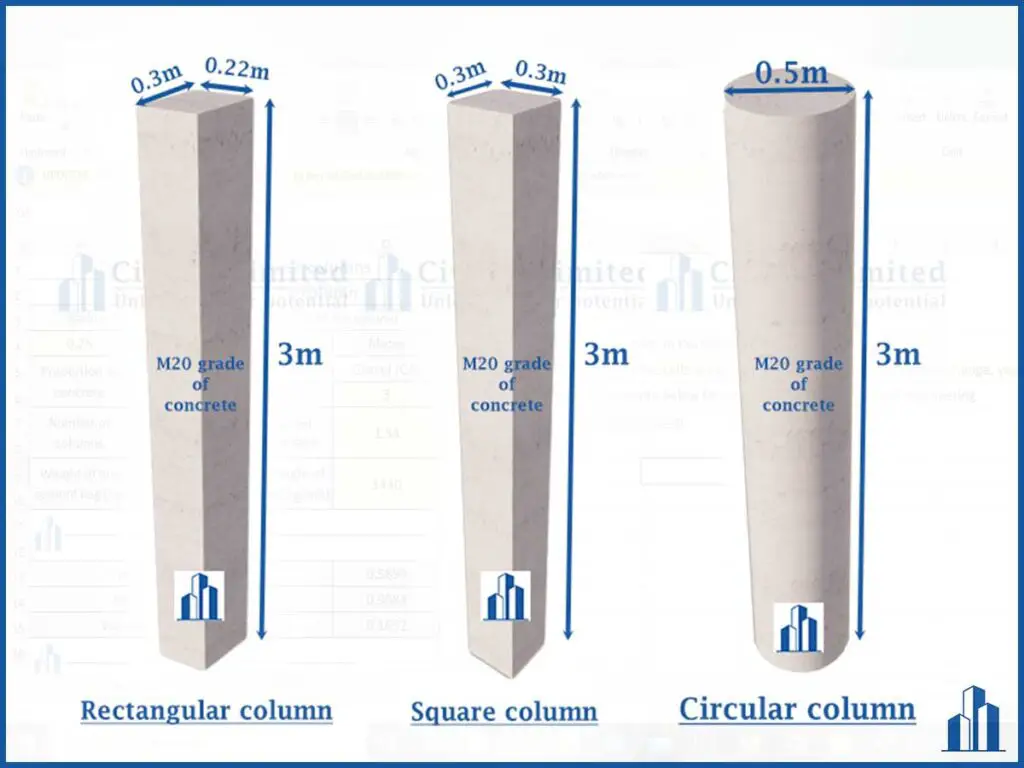We have already discussed the 3 ways of doing brick wall/brickwork estimation.
If you don’t read that article, please go read that article and come to this post to get a clear idea of brickwork estimation otherwise you find it difficult to catch up.
Read here: How to calculate the number of bricks, cement, and sand required for constructing a brick wall?
Now, in this article, we are going to discuss some of the practical examples of calculating materials for brickwork and we are going to solve it in 3 ways as shown in the above article.
Let’s dive into the first example.
Example 1
Let’s say we are going to construct a wall of 5m length, 0.09m width, and 3m height by using a standard brick size of 190 x 90 x 90 (mm) with 10 mm mortar of mix ratio 1:5 in between. Calculate the number of bricks, quantity of cement, and sand required.
Type 1) Conventional method
Volume of brick wall = 5 x 0.09 x 3 = 1.35 m3.
Volume of single brick without mortar = 0.19 x 0.09 x 0.09 = 0.001539 m3.
Volume of single brick with mortar = 0.20 x 0.10 x 0.10 =0.002 m3.
No. of bricks required = Volume of brick wall / Volume of single brick with mortar
Number of bricks required = 1.35/0.002 = 675 bricks.
Volume of mortar required = 1.35 – (0.001539 x 675) = 0.311175 m3.
Dry volume of mortar required = 0.311175 x 1.3 = 0.4045275 m3.

Volume of cement required = 0.4045275 x (1/6) = 0.067421 m3.
Quantity of cement required = 0.067421 x 1440 kg/m3 = 97.08 kg.

Volume of sand required = 0.4045275 x (5/6) = 0.33710 m3 x 35.31 = 11.90 cft.
Type 2) Thumb rule method
Volume of brick wall = 5 x 0.09 x 3 = 1.35 m3.
Volume of single brick without mortar = 0.19 x 0.09 x 0.09 = 0.001539 m3.
No. of bricks required = Volume of brick wall / Volume of single brick without mortar
Number of bricks required = 1.35/0.001539 = 878 bricks
Assume in a brick wall, 23% of the volume is occupied by mortar.
Total number of bricks required = 878 – (23% x 878) = 676 bricks.
Volume of cement mortar = 23% of volume of wall = 0.23 x 1.35 = 0.3105 m3.
Dry volume of cement mortar = 0.3105 x 1.3 = 0.40365 m3.
Volume of cement required = 0.40365 m3 x (1/6) = 0.067275 m3.
Quantity of cement required = 0.067275 x 1440 = 96.87 ~ 97 kg.
Volume of sand required = 0.40365 m3 x (5/6) x 35.31 = 11.87 cft
The calculations of the thumb rule are easy when compared to the conventional method. Once you understand the concepts clearly, then you can easily do it in minutes with the help of a calculator.
CAUTION: If you don’t understand the calculations, then please refer to the previous article (click here to read it). The calculations involved here are the same as that of the article mentioned here.
3) Using an automatic calculator
If you don’t want to do these tedious calculations then it’s fine. Use brickwork estimation calculator to derive the exact same result.

Note: If your calculations differ from the calculator results, then it is because the calculator takes all values behind zeros accurately. So try taking all decimal values while workout then you should have the same results as shown above.
From the above 3 brickwork estimation calculations, it is verified that the quantity of materials required for the above-stated situations are,
Number of bricks = 675
Qty of cement = 97 kg
Volume of sand = 11.90 cft.
While ordering, add an additional 5% of these materials to compensate for the wastage.
Example 2
Let’s say we are going to construct a wall of 5m length, 0.09m width, and 3m height by using an available brick size of 230 x 110 x 80 (mm) with 10 mm mortar of mix ratio 1:5 in between. Calculate the number of bricks, quantity of cement, and sand required.
Now you may notice that it is the same problem but with a different size brick. This condition may happen frequently at the site because the size of the brick varies according to the region, manufacturers, etc.
Let’s solve it again by using the three different techniques.
Type 1) Conventional method
Volume of brick wall = 5 x 0.09 x 3 = 1.35 m3.
Volume of single brick without mortar = 0.23 x 0.11 x 0.08 = 0.002024 m3.
Volume of single brick with mortar = 0.24 x 0.12 x 0.09 =0.002592 m3.
Number of bricks required = 1.35/0.002592 = 521 bricks.
Volume of mortar required = 1.35 – (0.002024 x 521) = 0.295496 m3.
Dry volume of mortar required = 0.295496 x 1.3 = 0.3841448 m3.
Volume of cement required = 0.3841448x (1/6) = 0.06402413 m3.
Quantity of cement required = 0.06402413 x 1440 kg/m3 = 92.19 kg.
Volume of sand required = 0.3841448 x (5/6) = 0.32012067 m3 x 35.31 = 11.30 cft.
Type 2) Thumb rule method
Volume of brick wall = 5 x 0.09 x 3 = 1.35 m3.
Volume of single brick without mortar = 0.23 x 0.11 x 0.08 = 0.002024 m3.
Number of bricks required = 1.35/0.002024 = 667 bricks
Assume in a brick wall, 23% of the volume is occupied by mortar.
Total number of bricks required = 667 – (23% x 667) = 514 bricks.
Volume of cement mortar = 23% of volume of brick wall = 0.23 x 1.35 = 0.3105 m3.
Dry volume of cement mortar = 0.3105 x 1.3 = 0.40365 m3.
Volume of cement required = 0.40365 m3 x (1/6) = 0.067275 m3.
Quantity of cement required = 0.067275 x 1440 = 96.87 ~ 97 kg.
Volume of sand required = 0.40365 m3 x (5/6) x 35.31 = 11.87 cft.
Observe that when the dimension of the brick varies thumb rule didn’t give exact results but gives an approximate idea about the quantities. If you want accurate results, either go for the conventional method or use a calculator.
3) Using an automatic calculator

From the 3 calculations, it is verified that the quantity of materials required for the above-stated situations are,
No. of bricks = 521
Qty of cement = 92.19 kg
Volume of sand = 11.30 cft. While ordering, add an additional 5% of these materials to compensate for the wastage.
Example 3
What if the wall has an opening?
Mostly in site, all the walls have an opening which may be doors or windows. In that case, there is nothing to worry about just calculate the volume of the opening and deduct it from the total volume of the brick wall (step 1) and continue the remaining steps as same as above.
Hope you understand the examples shown here about brickwork estimation. If you have any queries (or) if you find this article helpful, let us know in the comment section.
Read more : Laboratory tests of cement, How to check the quality of cement at the construction site?.



